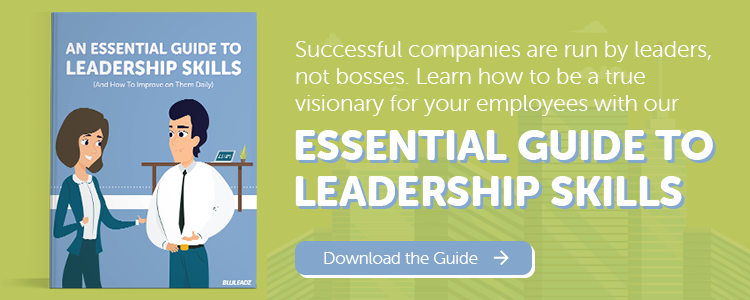A talent development program is one of the best investments you can make in your people.
Done right, it can become a wellspring of future leadership that adds value throughout the organization. This could mean more growth – and revenue – as individuals take on higher-level positions in the company and opportunities become available for more employees.
Looking for some tips on how to start your own employee development program? Here’s how you can launch a program that will equip your marketing team for excellence.
1. Know Your Talent – and Your Strategic Goals
What skills would your marketing team need to get to the next level?
Delve deep into your data and figure out where improvements would have the most oomph:
- What processes within your marketing team are taking up the most time?
- What new tools or technologies would help you achieve better campaigns?
- What skills, tactics, or media are others using that you want to embrace?
- What knowledge excites your team members, based on their feedback?
If you’ve been using marketing automation solutions to capture relevant data, you have a leg up on figuring out where your skill gaps are. Look at post-mortem reports from campaigns and work with colleagues from sales and the product team to understand where unmet needs may be.
2. Identify Providers You Can Trust on Training
There are tons of training and development options out there – which is best for you?
Odds are that even if you plan to build a 100 percent in-house professional development program, you’ll start with some off-the-shelf training material from a learning vendor.
That means looking for experts in marketing who have a proven reputation for knowledge in your space. Providers your company already trusts should be your first stop.
3. Determine Who Will Be Trained and When
One of the most fundamental questions to ask is this: Do you want to train individuals or groups? A professional development program can have a huge impact on both levels.
On-demand video training can be an effective way to give entire teams a baseline skillset and shared nomenclature, aligning them with your strategic goals.
On the other hand, individual contributors can strengthen their core skills or build leadership chops through online training balanced with mentoring and one-time seminars.
4. Focus on Methods that Work for Your Team
The galaxy of training options now includes everything from the conventional classroom to online seminars, video, and mobile apps. In addition to making sure your chosen method delivers all the knowledge you want, it’s also vital it be convenient and accessible.
Luckily, marketers live and breathe mobile, typically the most cost-effective option.
However, bear in mind everybody has their own learning style, too. A professional development program won’t be very effective if it doesn’t take into account the best ways for people to review, retain, practice, and actually implement information.
5. Define Operational Objectives for the Program

Having clear short-term objectives for your professional development program will help you be certain you’re moving toward the ROI you expect. Develop SMART goals around your program and connect those goals to metrics you can measure regularly.
For example, if your program is intended to improve retention, observe the overall attrition rate among participants over time. If you’re looking to identify and refine high-potential leaders, track their attainment of higher level positions.
6. Build Meaningful Bonds of Mentorship
Knowledge comes in many forms, and a professional development program can give people access to skills and tools they might never have thought about otherwise. But the fastest way to put it all together remains the human element: Mentorship.
Mentorship allows rising stars to connect with established leaders who’ve been where they are.
Mentorship is an incredibly useful adjunct to conventional unit-based learning:
- It ensures learners don’t “reinvent the wheel” while putting knowledge into practice.
- They can brainstorm ideas about best practices and course correct to avoid mistakes.
- They get exposure to coherent leadership philosophy, not just bits and pieces of info.
When the time comes to jump from theory to practice, memorizing tools and tactics doesn’t get the job done. Learners are at their most effective when they understand general principles that make systems work. Only mentors from within your company can provide that perspective.
7. Clarify How Learners Can Take Charge
As you develop your curriculum, every item should have a clear connection to the tactical needs and strategic goals of your marketing team. With all of the thought and planning you’ve invested in your professional development program, there’s one last item:
Make your rationale clear to your learners!
At a minimum, learners should know which units are essential and which ones are optional. You can go further by allowing learners to access units that might be related to roles higher up the org chart or those that may prepare them to transfer into related, but distinct disciplines.
Your people are your most crucial competitive asset. With a talent development program, you can show your team you’re committed to cultivating their skills and abilities.


Rob Steffens
I am the Director of Marketing here at Bluleadz. I'm a huge baseball fan (Go Yankees!). I love spending time with friends and getting some exercise on the Racquetball court.